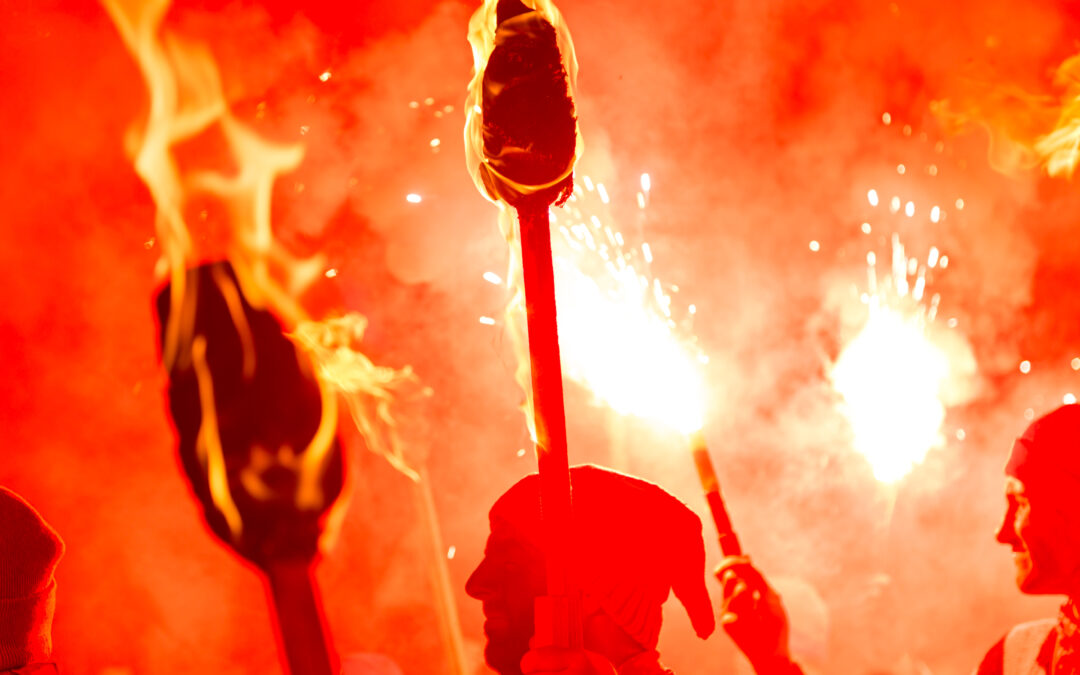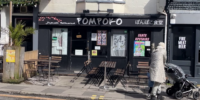Intro
Bonfire Night is a time for celebration and fireworks in Sussex. Bonfire Night, also known as Guy Fawkes Night, is celebrated on 5th November each year, and Sussex boasts some of the best celebrations in the country. From traditional bonfires and parades to impressive firework displays, and of course, plenty of food and drink, there is something for everyone to enjoy. In this post, we’ll explore the context and meaning behind the celebrations, as well as a rundown of each of the celebrations happening in Sussex this year.
History of Bonfire Night
The origins of this historic celebration and in particular the involvement of Guy Fawkes, can often be forgotten and anyway, what’s better than a lovely historic (and brief I promise) recap of this religious and political subterfuge?
At its core, the plot to blow up the house of parliament, killing the current monarch, James I, as well as many of the protestant nobility, was borne in the hopes of sparking a regime change that would bring Catholicism back to prominence in Britain.

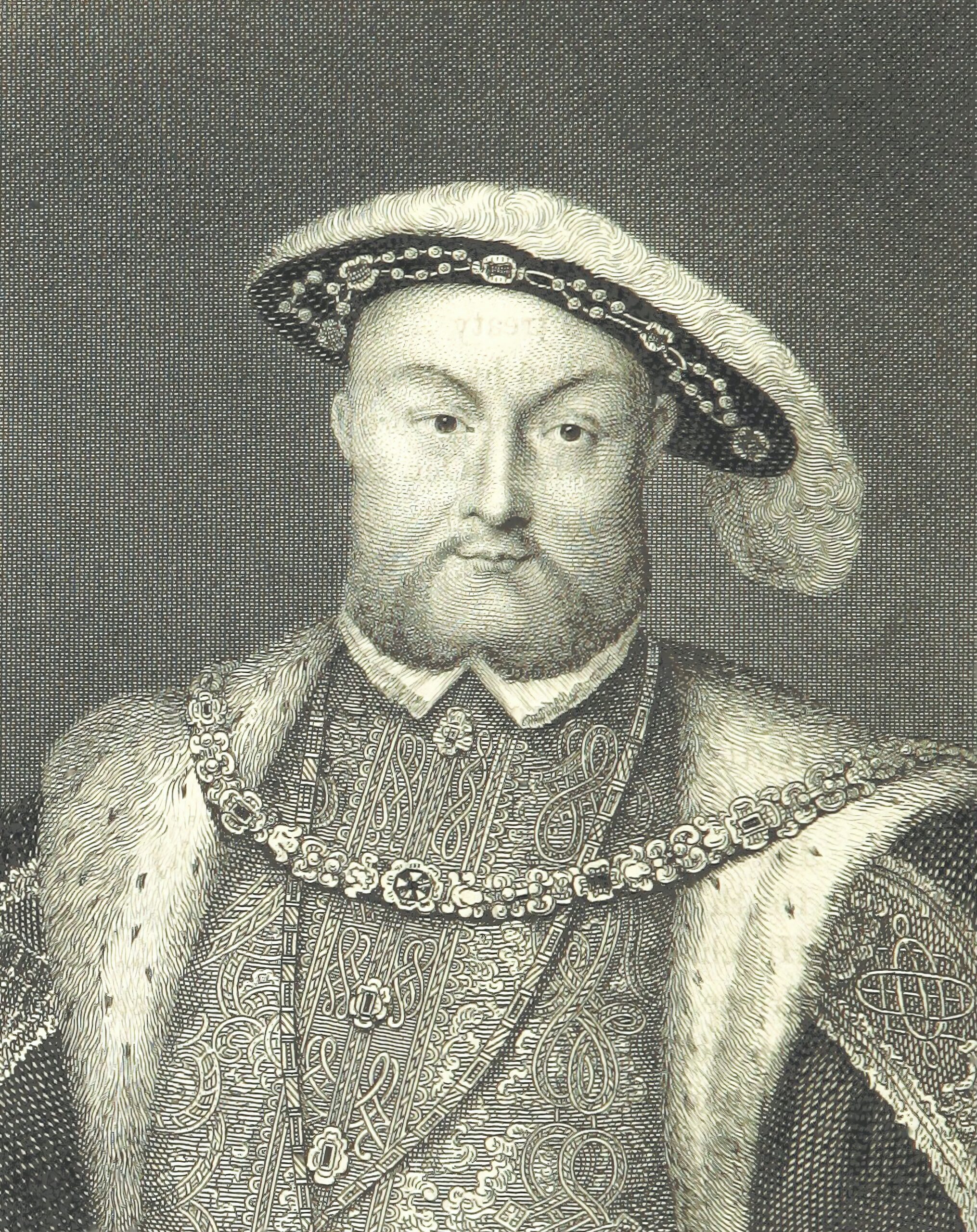
The conspirators, one of which being Guy Fawkes, were all of the Catholic faith. Catholicism had been the dominant religion in England up until the reign of Henry VIII, when, despite his own very public dedication towards Catholicism, in his pursuit of an heir, he saw Catholicism overthrown in favour of Protestantism, in order to allow him to divorce and remarry.
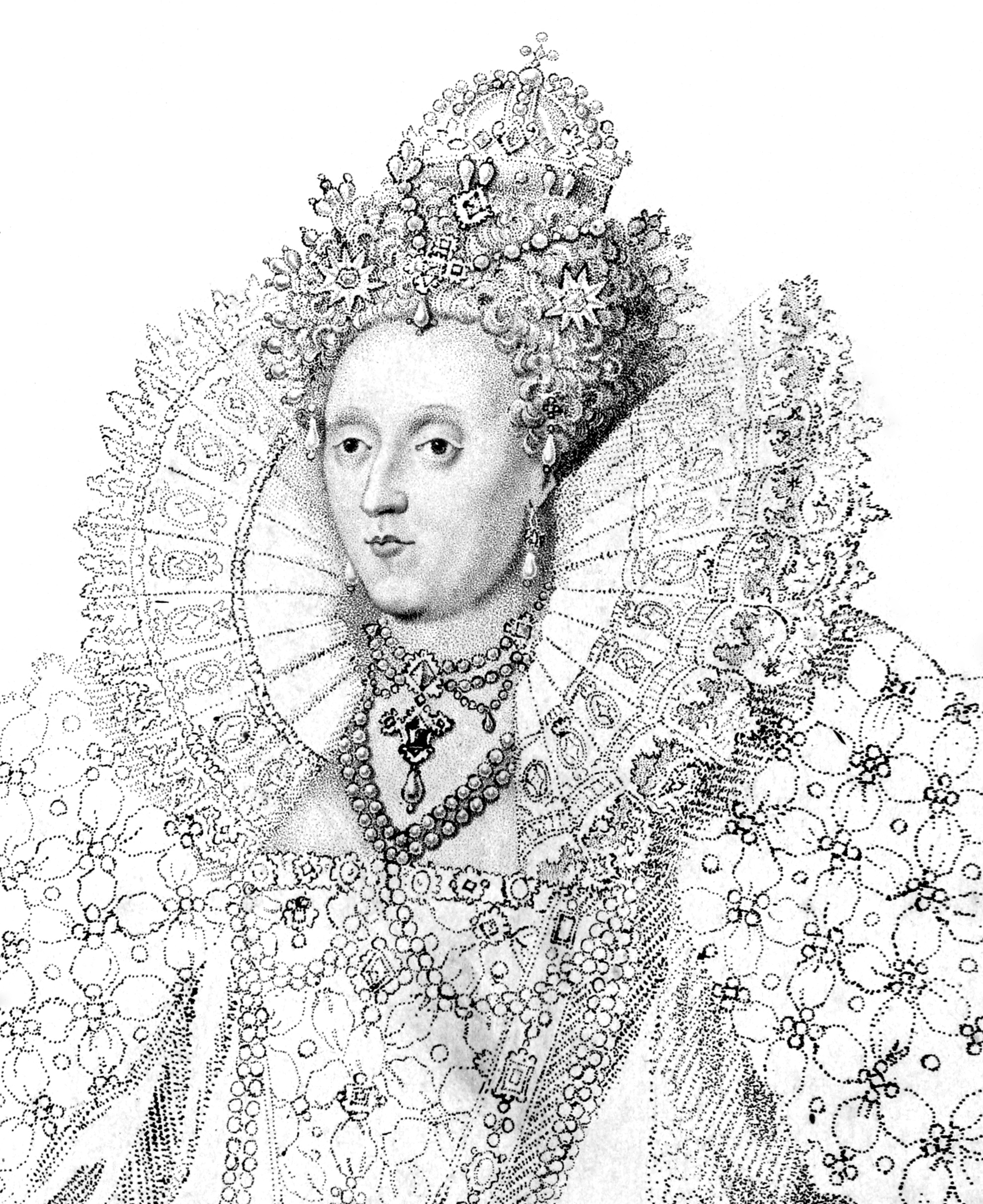
There would be a shift back to Catholicism following the six year reign of Edward VI, Henry VIII’s son, when Edward’s sister, Mary, came to power and attempted to reverse the Reformation. But her reign lasted only five years before Elizabeth I took the throne and confirmed a moderate form of Protestantism in England.
I know we haven’t yet mentioned either bonfire night or Guy Fawkes, but we’re nearly there. Just a little more history first. Now, following the reign of Elizabeth I, came King James (I). His reign was particularly important as it signalled the end of any possibility of the return of Catholicism, when the monarch signed a peace treaty with Catholic Spain, ending any hopes of a Spanish invasion and a return to Catholicism.
This is the context behind the famous “Gunpowder Plot”. At the conception of the plot, there were five plotters, although this would rise to thirteen by the time of execution, including Guy Fawkes, but actually lead by Robert Catesby (sorry Guy). All the men were devout Catholics, mostly part of the gentry, the Catholic conspirators attempted to spark a Catholic uprising, culminating with the installation of a Catholic monarch.
So, if Guy Fawkes wasn’t the leader of the group, then why is it his name, and not Robert Catesby’s, that lives on in infamy? Well Guy Fawkes was given the responsibility of lighting the fuse and, under the guise of John Johnson, was the one who was caught with the explosives under the Palace of Westminster, in the failed gunpowder treason and plot to assassinate King James.
This failed political and religious coup quickly became a big part of English culture, with different forms of celebration blossoming over the following decades, with a written record of bonfires and fireworks appearing as early as 1660.
Classic Bonfire Night Traditions
Bonfires and Burning Effigies
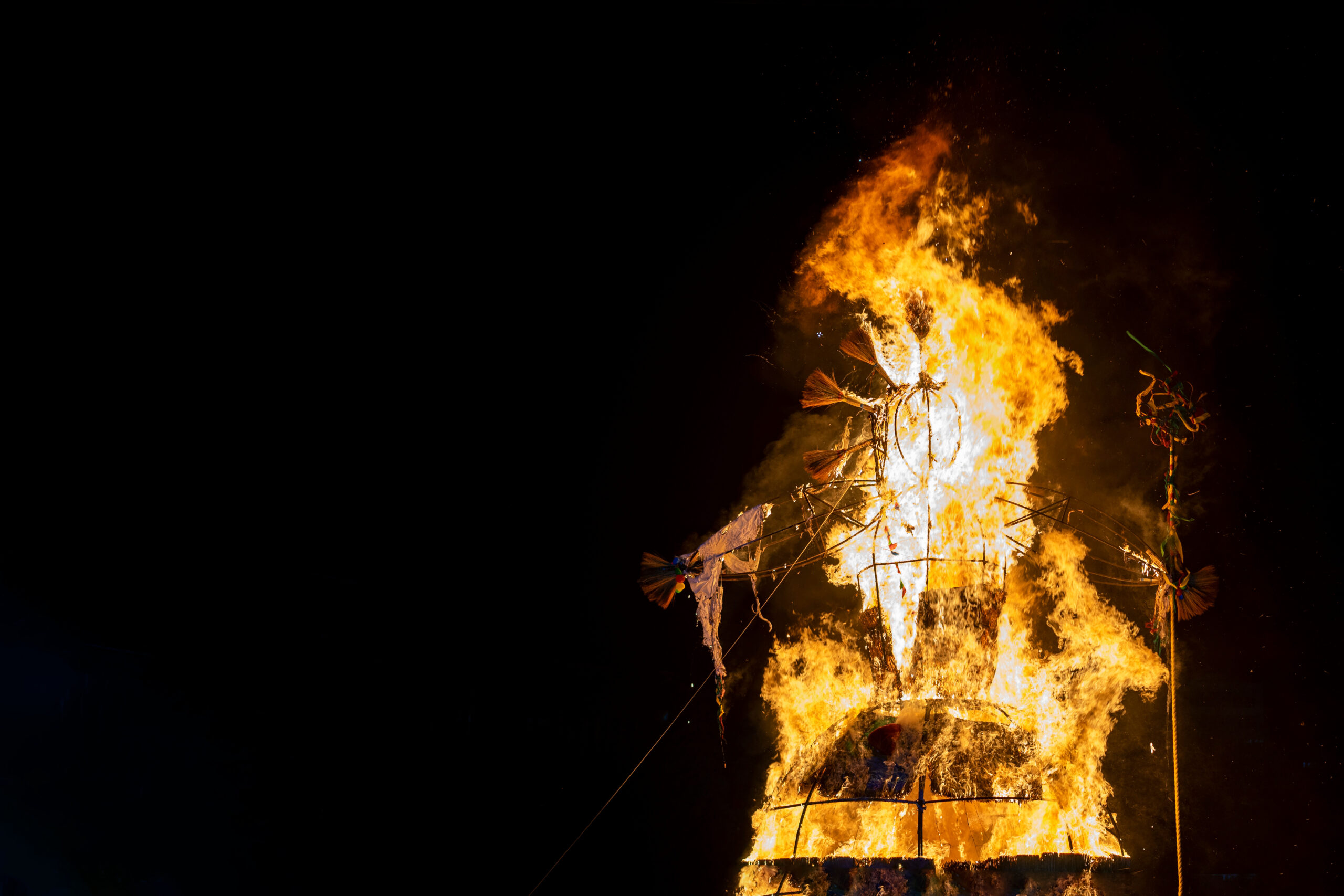
One of the most visually striking traditions of bonfire night involves creating a giant effigy to be burnt atop a bonfire. The most common of which being a Guy Fawkes effigy, although there is a rich history of effigies depicting those in the public eye, with the most popular group being our beloved politicians. In recent years we’ve seen Liz Truss with her lettuce, David Cameron with his pig, and Boris Johnson holding Theresa May’s severed head, all depicted in effigy form.
The creation and burning of these effigies is not only a great way of bringing together the local community, but can also be an incredibly cathartic experience. A spectacular and light hearted way of releasing pent up frustrations at the systems that govern us, that echoes the anti establishment sentiment of the original plot, but with far less drastic implications, with each bonfire society bringing their own ideals and style to the tradition.
Torchlit Processions
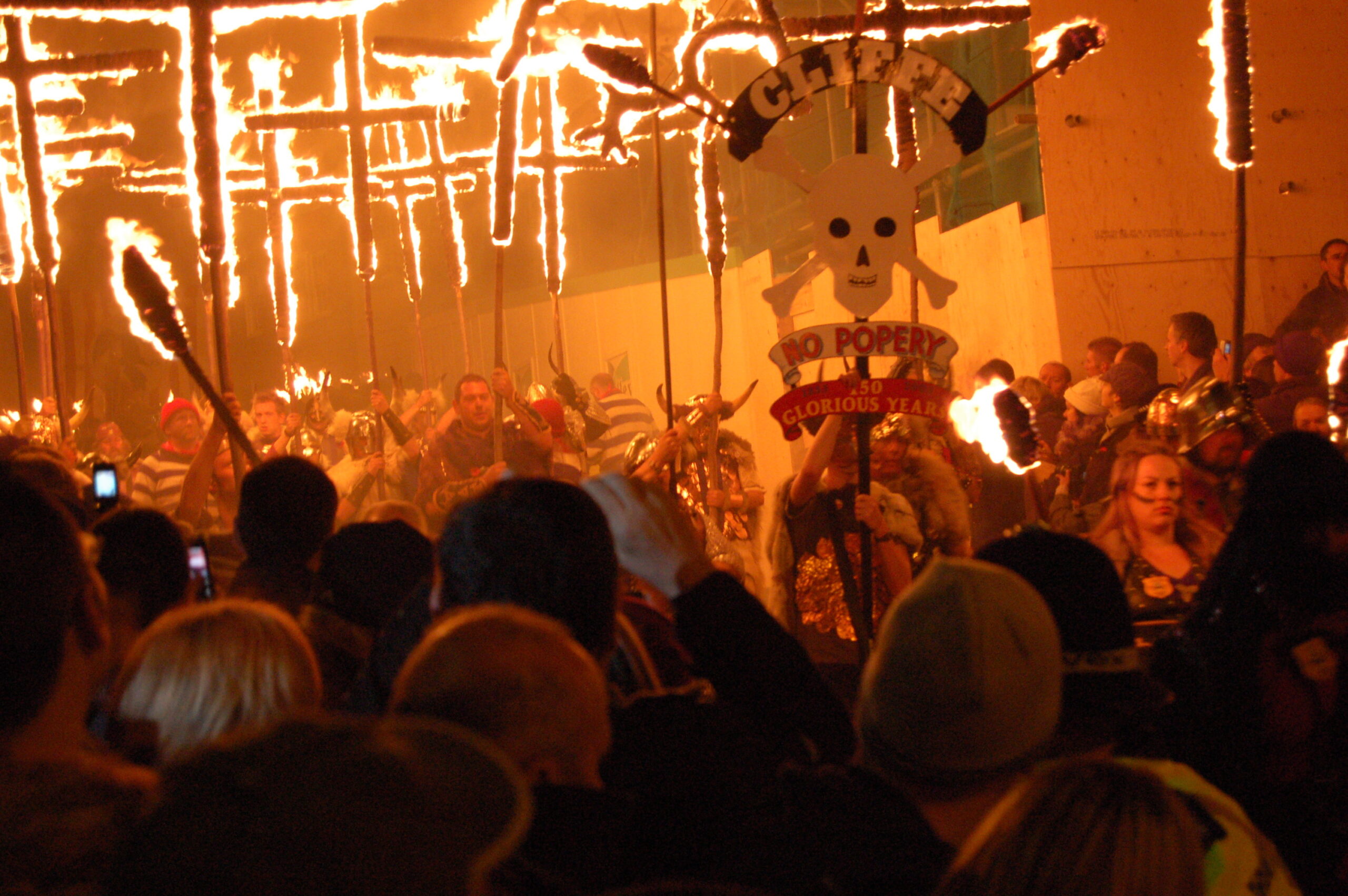
Bonfire night in Sussex also features torchlit processions, during which participants walk through the streets with torches in hand and often accompanying their effigies. The fire and torches create a magical and festive atmosphere, while also making the (literally larger than life) effigies come to life.
Fireworks
One of the most thrilling aspects of bonfire night in Sussex is the fireworks display. Firing rockets, colourful stars, and sparkly glitter, the display illuminates the night sky, dazzling onlookers. These displays usually last for about 25-30 minutes and many have personalised music arrangements to accompany the spectacular visuals. Watching a fireworks display is like watching a work of art come to life in the sky. No matter where you are in Sussex during this celebration, whether you’re a city dweller or find yourself residing in the countryside, you will most likely be unable to avoid either the sight or sound of the fireworks.

Food

If your festive celebrations do not involve food, then I’m not interested. No celebration is complete without food, and Sussex has no shortage of delicious offerings. While delicious street food will always be found in any Sussex celebration, our main two traditional treats have to be toffee apples and parkin. For the uninitiated, parkin is a toffee-like cake made with oats and quite delectable. Mulled wine is also a popular choice to warm up on a chilly November night, putting the finishing touch on your bonfire night refreshments and really bringing the celebrations together.
Bonfire Societies
The Bonfire Societies of Sussex are a treasured part of the annual Bonfire Night celebrations, with each bonfire society having their own particular identity. Each society is made up of volunteers from local communities who work to create the effigies, organise the processions, set up bonfires, and put on the fireworks displays. In recent years, participation in these societies has increased, with Sussex Bonfire societies attracting visitors from all over England.
What makes Sussex the King of Bonfire Celebrations?
When it comes to Bonfire Night, this is the county that holds all the cards. Sussex is undoubtedly the king of Bonfire Night. Not only do we have one of the oldest Bonfire Night societies in England with the Battle Bonfire Boyes having been formed in 1646, costing the organisers 2 shillings and 6 pence for that first celebration, but we also have the largest Bonfire Night celebration in the country with the Lewes Bonfire Night celebrations.
Lewes Bonfire Night is an event that every Sussex resident should experience at least once in their lifetime. The different bonfire societies and their unique identities offer a fascinating insight into Sussex’s diverse history and tradition. The coming together of seven separate Bonfire Societies makes this event one of the most spectacular displays in the country, with the streets routinely packed. So, mark your calendars and make sure you don’t miss this grand tradition that makes Lewes feel like one of the liveliest places in Sussex, despite not being one of the most populous.

Other large scale events can be found in Hastings, Eastbourne and Rye, who consistently put on a spectacular display at this time of year. With that said, please consider our list of Sussex based Bonfire Night celebrations (below), of which we would recommend you attend as many as you are able.
List of Sussex Bonfire Celebrations 2023
Uckfield – Saturday 2nd September
Crowborough – Saturday 9th September
Mayfield – Saturday 16th September
Burgess Hill Bonfire – Saturday 30th September
Rotherfield and Mark Cross Bonfire – Saturday 7th October
Eastbourne Bonfire – Saturday 7th October
Northiam Bonfire – Saturday 7th October
Hastings Bonfire – Saturday 14th October
Heathfield Bonfire – Saturday 14th October
Seaford Bonfire – Saturday 21st October
Hailsham Bonfire – Saturday 21st October
Ewhurst and Staplehurst Bonfire – Saturday October 28th
Newick Bonfire – Saturday October 28th
Battle Bonfire – Saturday 4th November
Lewes Bonfire – Saturday 4th November
Rye – Saturday 11th November
East Hoathley – Saturday 18th November
South Heighton and Robertsbridge Bonfire – Saturday 18th November
Conclusion
Bonfire Night celebrations in Sussex are a fantastic way to celebrate the history and culture of the region, that has become far more meaningful than just the legacy Guy Fawkes, his co conspirators and their plot to blow up the house of parliament. From impressive firework displays to traditional parades and costumes, there is something for everyone to enjoy. Just remember to plan ahead, stay safe, and make the most of the festivities. So, why not gather your friends and family, wrap up warm, and head out to one of the many Bonfire Night events happening in Sussex this year?

